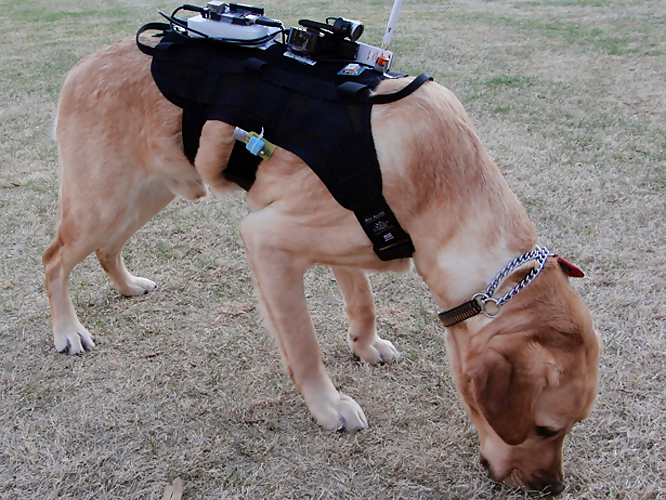
views
Raleigh: North Carolina State University researchers have developed new technology designed to improve communication between dogs and humans.
Researchers at North Carolina State University are combining their love for dogs with their love of technology.
A joint project between the computer science and electrical and computer engineering departments and the College of Veterinary Medicine has developed new technology designed to improve communication between dogs and humans.
"We are developing what we are referring to as a 'smart harness' and you can think of the 'smart harness' as a platform for two-way computer-mediated communication between dogs and handlers," says Dr. David Roberts, an assistant professor of computer science whose dog Diesel is one of their primary lab partners.

The smart harness is a computer-equipped backpack that fits comfortably on a dog's back. One of the project's prototypes features a twin battery back on both sides of the dog, a mounted webcam, vibrating motors similar to the technology that makes a cell phone buzz, and a wireless USB adapter, among other technologies.
Using a tablet to send signals to the harness and to the dog, the researchers are able to see how the dog reacts and interprets the modes of communication.
On a recent day, the team was training Diesel to associate the vibrating buzz on its sides with hand signals given by Roberts. One member of the team used a tablet to prompt the vibration on the side of the dog's body which he wanted the dog to turn. Roberts then used his hand to reinforce the direction of the command.
"We're using this technology to ask some very fundamental questions about the nature of the way that animals can perceive computer-mediated communications and the way they can interact with computers in order to send digital signals across wireless communication links to handlers," Roberts says.
The technology can also reveal the position of the dog -- whether it's standing, sitting, walking or running -- by sending signals back to the handler.
Researchers say the technology has multiple applications, including for search and rescue dogs and training pets.
The technology can also be customized for different purposes. One prototype features three electrocardiography electrodes which can monitor the heart rate and transmit that data to a tablet. This allows researchers and dog handlers to monitor the dog's physical well-being.
"Just as one example, this project gives us the capability for the dog to inform us of that sort of information and for us to evaluate the dog's welfare. Is it overheating? Is it in a safe area? So with interfaces on the dog, we can keep the dog safer and be more sensitive to the subtle information that the dog is communicating to us," says Dr. Barbara Sherman, a clinical professor of behavioral medicine.
Much of the technology comes off the shelf but the researchers are repurposing the equipment for use with dogs.
Dr. Alpert Bozkurt, an assistant professor of electrical and computer engineering, says that the technology offers everyday people an opportunity to bond with their dogs and extra tools to train them.
"Our dream is to give people the capability to train their dogs like professionals at home, so that the pets can be turned into working animals. For example, for search and rescue, when there's a big disaster in an urban environment, hundreds of houses collapsed, and there's only a certain number of trained dogs, so this would give us the capability to train more and more dogs for such purposes," Bozkurt says.




















Comments
0 comment